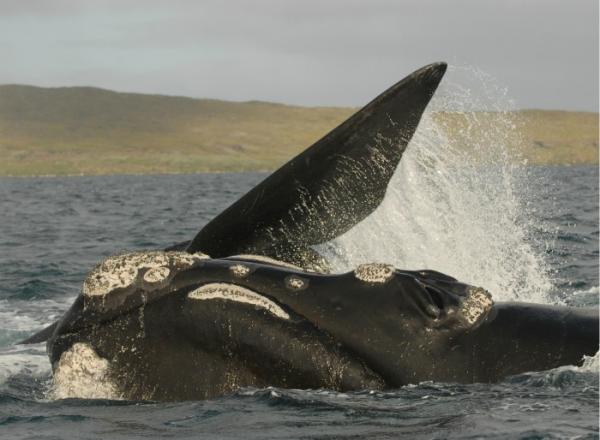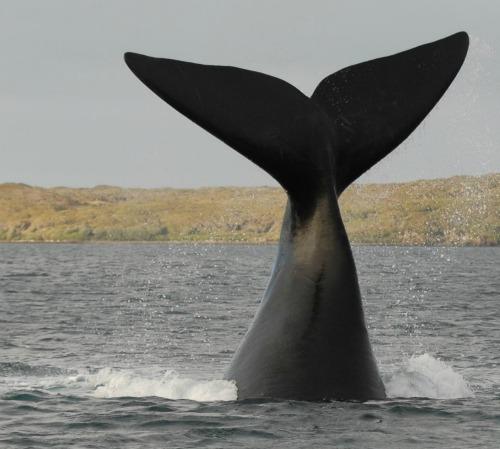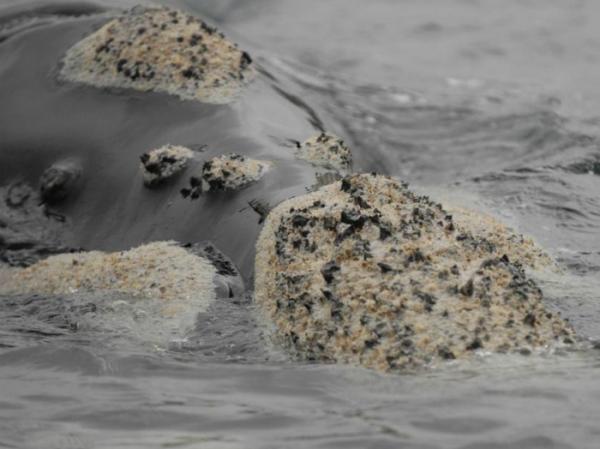Right Whales Stage Comeback


Right whales, a species once hunted to local extinction in the waters around New Zealand, may be making a heartening return.
Researchers are studying whales that have recently reappeared around New Zealand; and now, thanks to DNA fingerprinting, scientists have begun to figure out where the whales are coming from.
They suspect the massive mammals are rediscovering a habitat that was erased from whale memory more than 100 years ago.
Right whales wronged
Right whales once crowded the shores of New Zealand. Two centuries ago, hundreds of the colossal whales gathered each winter in the island's shallow, sandy bays to socialize, give birth and nurture their young calves in the temperate waters.
"You could throw a rock at them from the beach in a lot of places," said Scott Baker, associate director of the Marine Mammal Institute at Oregon State University.
Yet beginning in the 1820s, this idyllic habitat became the site of abject slaughter. With the dawn of the whaling age in the Southern Hemisphere, New Zealand's bays, and eventually its surrounding waters, were picked clean of the massive baleen whales.
Get the world’s most fascinating discoveries delivered straight to your inbox.
Right whales, which can grow up to 60 feet (18 meters) long and weigh up to 100 tons (equivalent to 56 pickup trucks), have rich stores of blubber, a valued source of fuel and lamp oil during whaling's heyday. In fact, their generous layers of blubber earned the species its deceptively sunny moniker; whalers knew the gigantic creatures were the "right" whales to kill
There are three distinct right whale species : the North Atlantic, the North Pacific, and the Southern right whale. The southern species roams the cool waters of the sub-Antarctic in summer, and spends the winter near the southern edges of South Africa, South America, Australia and New Zealand or did, once upon a time.
Some right whale populations recovered from decades of hunting those around Patagonia, for example, have made an impressive comeback. Yet others remained mysteriously absent.
"We think that there were perhaps 30, maybe even up to 40,000 right whales in the larger New Zealand area in the time of early European explorers," Baker said. "Throughout most of the 20th century right whales essentially disappeared from the New Zealand mainland."
So why did some populations recover and others didn't? Baker says it may have to do with whale culture.
Lost knowledge
Unlike creatures such as monarch butterflies and birds, which seem to have their migratory destinations imprinted onto their DNA, right whales' brains don't appear to be hardwired with directions back to their calving grounds. Instead the tradition is passed from mother to calf. If an entire whale population is killed off, as in New Zealand, so is the collective whales' memory of where they go to have their young.
"Can we absolutely prove that? No. But these are social, long-lived animals like humans and elephants, and we think learning is a primary characteristic," Baker told OurAmazingPlanet. "We think they're capable of changing these traditions, and we think that's what we're seeing." [Related: Quest for Survival: Incredible Animal Migrations ]
In the early 1990s, aerial surveys revealed a crowd of right whales in a bay in the Auckland Islands, about 300 miles (500 kilometers) south of New Zealand's mainland.
It turned out the whales were doing well there, despite calving conditions that are colder than what the species typically prefers, and the population was growing. Then, around 2005, a few right whales began to appear around New Zealand a vast, inviting habitat. So where were those whales coming from?
That's where the DNA fingerprinting comes in.
A new tradition?
Emma Carroll, a Ph.D. candidate at the University of Auckland in New Zealand, spent several years venturing out in small boats to take tiny whale biopsies, allowing her to make genetic profiles of dozens of whales.
To collect samples, researchers shoot a whale with a metal dart, which pulls out a plug of skin about the size of a pinky fingernail.
"I think of it like a mosquito bite," Carroll said. Indeed, she said, the whales don't seem to mind: "Sometimes they'll be asleep and they don't even wake up."
Analysis revealed that seven females from the Auckland Island population had begun to spend some winters in the waters around New Zealand . So if this new habitat wasn't taught to them by their own mothers the way whales learn where to go each winter how did these whales stumble upon this new habitat? And why are they returning?
"That's a really good question," Carroll told OurAmazingPlanet. Researchers aren't sure how the whales have rediscovered their old haunt, since memory of the place was likely lost with the destruction of the local population.
One hypothesis is that conditions are getting too crowded around the Auckland Islands. Is there, perhaps, a novelty gene, that prompts some whales to strike out for new, roomier calving grounds?
It's not clear, Carroll said, and more research is needed.
"Hopefully the whales that are going to the mainland are starting a new tradition," Carroll said. "It's probably early days, because we're not seeing them in huge numbers, but it's promising. This is hopefully the vanguard of a proper recovery."
The findings are documented in the current edition of the journal Marine Ecology Progress Series.
- In Photos: Tracking Humpback Whales
- Images: Amazing Creatures from the Census of Marine Life
- World's Cutest Sea Creatures
Reach Andrea Mustain at amustain@techmedianetwork.com. Follow her on Twitter @AndreaMustain.




